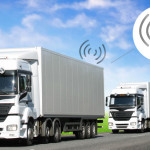
In our article on “Fleet Management Solution and Vehicle Tracking System”, we mentioned the word fleet and vehicle telematics in a number of places. As promised, this article will shed more light on what telematics is all about and how/why it has attained a position of preeminence in fleet management generally and haulage operations in particular.
Telematics is literally a combination of the words Telecommunications and Informatics. Telematics, in a broad sense, is any integrated use of telecommunications with information and communications technology. It is the technology of sending, receiving and storing information relating to remote objects or spatially dispersed mobile assets such as vehicles, via telecommunication devices.
It could also be seen as the blending of computers and wireless telecommunications technologies, ostensibly with the goal of efficiently conveying information over vast networks to improve a host of business functions or services. The most notable example of telematics may be the Internet itself, since it depends on a number of computer networks connected globally through telecommunication backbones.
Overtime, the term telematics has evolved to refer to automobile systems that combine global positioning satellite (GPS) tracking and other wireless communications for automatic roadside assistance and remote diagnostics.
Telematics in Nigeria
The use of telematics is still at a developing stage in Nigeria given that the required backbone of GSM and GPS is in itself a recent introduction in our geographical space. However, information emanating from other climes like the United States for instance has it that the use of telematics is expected to reach 5.8 million units this year, with revenues growing to more than $2 billion, according to a study by C. J. Driscoll and Associates. Millions of telematics units are currently used to manage fleet vehicles, mobile workers, trailers, heavy equipment and other assets. In Nigeria notwithstanding and riding on the fast-paced deployment of telecommunication backbone by GSM service providers, the technology is fast gaining popularity especially among the major users of haulage services and operators in the sector. The insurance companies in particular have been at the forefront of driving the rate of penetration by making vehicle tracking an adjunct part of the bundle package for comprehensive coverage on mobile assets principally with a view to minimizing premium payment overload on the insuring public and arresting the contentious areas usually associated with claims settlement.
Advancement in Telematics
Major automakers are now equipping new prototype vehicles with wireless-based services controlled by voice commands. Telematics enables wireless data communication and opens up a huge range of possibilities. It can enable you to have wireless television and internet on your vehicle. Telematics is essentially a range of different features, options and devices that are brought together by a single principle – data and communication.
Through telematics you enjoy many benefits in your vehicle on a daily basis such as roadside assistance and remote unlocking of your vehicle. Let’s say you forgot the keys in the vehicle; with telematics and a quick phone call, you could get your vehicle unlocked.
How Telematics System Work
Telematics system starts with your vehicle which communicates with a third party off site somewhere via a satellite signal. Then at this third party location the data your vehicle sends is collected, stored, and analyzed by whatever software your manufacturer is using.
This data can even be used to adjust your vehicle based on your driver’s driving behaviour. For example it can look at how a driver handle curves and dynamically adjust itself to better handle the way the vehicle is driven around the road.
Perhaps even more amazing is that telematics can let you use a camera inside your vehicle and take a recording of your driver. In the event of a theft or accident, this can be powerful evidence to shift the case in your favor.
Major Components of Telematics
Telematics is based upon two key components, Tracking and Tracing.
Tracking is all about collecting data on your car. From the braking to the temperature outside, it’s getting data about your car to a third party database where it can be analyzed.
Tracing is putting together the links in this data and gaining new insights from it. For example there may be “black spots” on the road where an unusual amount of people have accidents. In these areas your sat-nav can automatically warn you to drive extra carefully, even though the signs may not indicate the need to do so.
This real time dynamic data is a valuable asset for any driver. Imagine that cars ahead of you have found slippery conditions on the road. Your sat-nav can alert you to the impending road conditions, advise you to alter your driving, all before you even see the danger zone ahead.
It is this impressive ability to trace data between vehicles and to analyze them for greater insight that is among telematics most impressive features.
Technology That Makes Up Telematics
Telematics is actually comprised of quite a few different pieces:
- Web
- Content
- Software & Applications
- Services
- Communication
- Hardware
Each piece of the telematics puzzle presents the opportunity for innovations, new ideas, and exciting breakthroughs that make driving a more safety-conscious and pleasurable experience.
The possibilities offered by telematics are truly exciting. Telematics is ultimately several different pieces of hardware that merges telecommunications and informatics for your vehicle. Through this marriage of hardware there is a plethora of exciting benefits available to drivers now and in the future.






